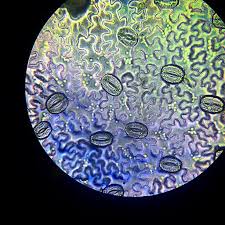How Aspirin Affects Plant Growth: Exploring Stomatal Density in Watercress
Summary:
This project began when I in high school as a simple science-fair curiosity: could something as ordinary as aspirin actually change the way a plant grows? To find out, I grew watercress under different aspirin concentrations for 21 days and then counted the tiny stomata on each leaf under a microscope. What I discovered surprised me — low doses of aspirin seemed to boost growth, but higher doses stressed the plants and reduced their stomatal density, almost as if the leaves were “closing up” to protect themselves. Watching these tiny plants respond to a common medicine taught me how sensitive and fascinating plant biology can be, and it sparked an even deeper love for hands-on experimentation, discovery, and asking “what happens if…?”
Download:


Aspirin—known chemically as acetylsalicylic acid (ASA)—is usually associated with pain relief in humans, but it also plays surprising roles in plant biology. Once dissolved in water, ASA converts into salicylic acid (SA), a plant hormone involved in growth, stress response, and immune signaling. SA influences leaf formation, photosynthesis, and cellular activity, meaning even small changes in its concentration could reshape how a plant grows.
To explore these effects, this study focused on Nasturtium officinale, commonly known as watercress, a semi-aquatic vegetable valued for its exceptionally high nutrient density. Understanding how ASA influences this crop isn’t just academically interesting—it also has practical agricultural relevance, particularly in improving plant growth and nutrient output.
Why Study Aspirin in Plants?


The Research Question
How do increasing concentrations of ASA (0 to 0.001 mol/L) affect stomatal density in watercress leaves after 21 days of growth?
Stomata are tiny pores on leaves that regulate CO₂ uptake and water loss. Their density influences how efficiently a plant can photosynthesize and adapt to stress. If ASA affects photosynthesis or growth, stomatal density may be one of the first indicators to change.
The Experiment Design
Watercress seeds were grown for 21 days across five ASA concentration levels: 0 mol/L (control), 0.00005 mol/L, 0.0001 mol/L, 0.0005 mol/L, 0.001 mol/L. Each condition received the same amount of water, light, and environmental exposure. After 21 days, leaf impressions were taken using clear nail polish, and stomatal density was measured under a microscope at 400x magnification.
What We Saw as the Plants Grew
As the watercress sprouts pushed through the cotton, the effects of aspirin were visible long before any microscope work. The plants given just a tiny bit of ASA grew taller and looked healthier, almost as if the low dose gave them a gentle boost. But when the aspirin concentration increased, the plants reacted very differently—shoots stayed short, leaves began to yellow, and a few even developed purple-tinged stems, which is usually a sign of stress in plants. Even germination slowed down. These early clues suggested that plants don’t mind a small nudge from aspirin, but too much quickly becomes overwhelming.
Low Doses Lead to Increased Stomata
When it came time to examine the leaves, the pattern became even clearer. The plants that received the tiniest dose of ASA had the most stomata—tiny pores that help plants breathe and take in carbon dioxide. But as the aspirin levels increased, the number of stomata dropped. The higher the dose, the fewer pores the plants developed. The trend was unmistakable: low aspirin seemed helpful, while high aspirin held the plants back. Even without knowing exact numbers, you can easily see the story—plants thrive with gentleness, not intensity.


Why Aspirin Changes How Plants Grow
This whole reaction comes down to how plants respond to salicylic acid, which is what aspirin turns into once it dissolves in water. In small amounts, this compound helps plants grow and stay healthy. But in large amounts, the plant interprets it as a danger signal. When that happens, it shifts into protection mode, slowing growth, tightening its pores, and reducing new cell formation. It’s like the plant saying, “Something feels wrong—better conserve energy and defend myself.” So instead of growing lush leaves with lots of stomata, the plant becomes cautious and conservative.
Contact
Reach out to discuss ideas or collaborations.
Phone
camtan064@gmail.com
+63 927-114-1655
© 2025. All rights reserved.
Navigation
